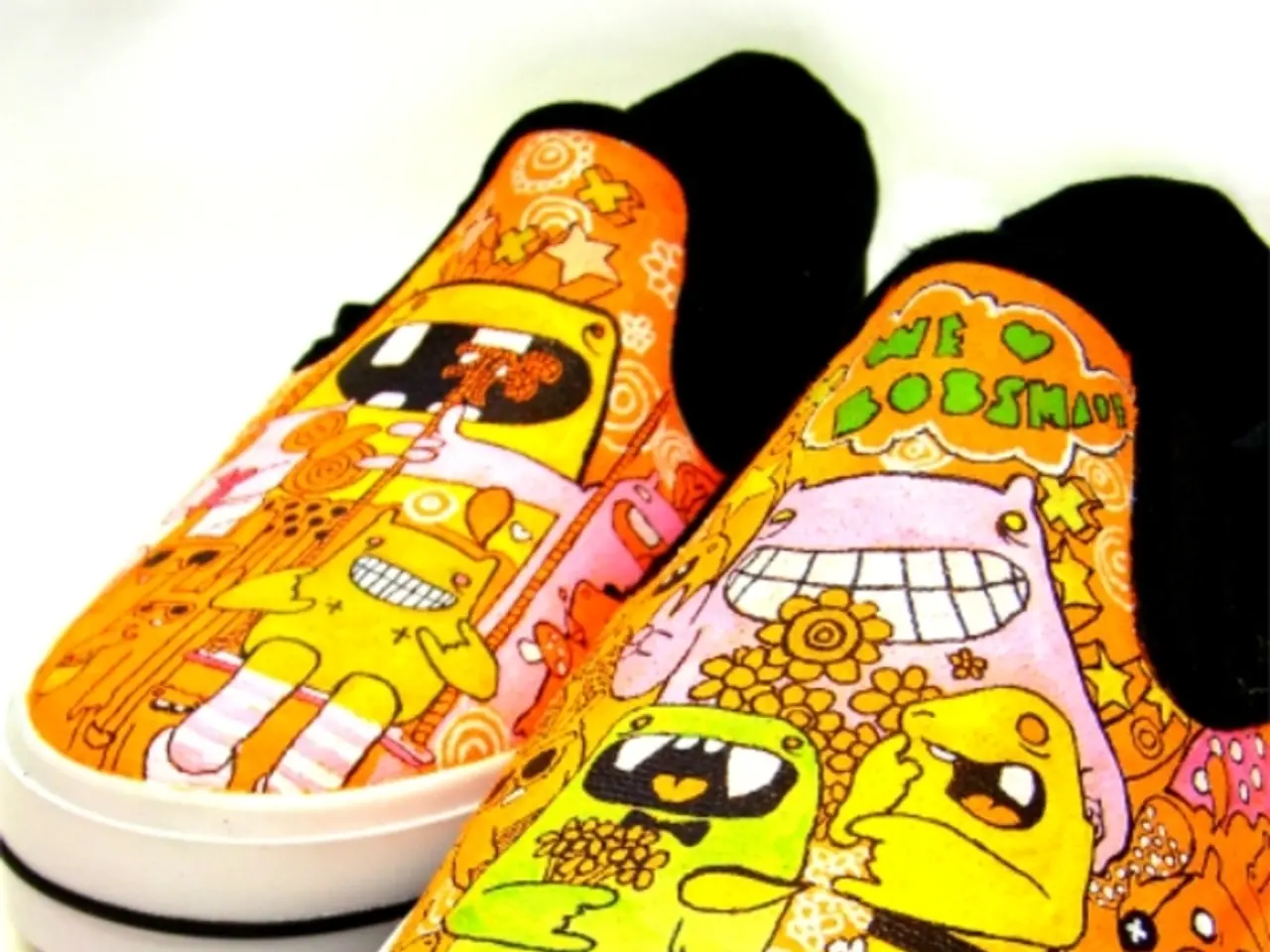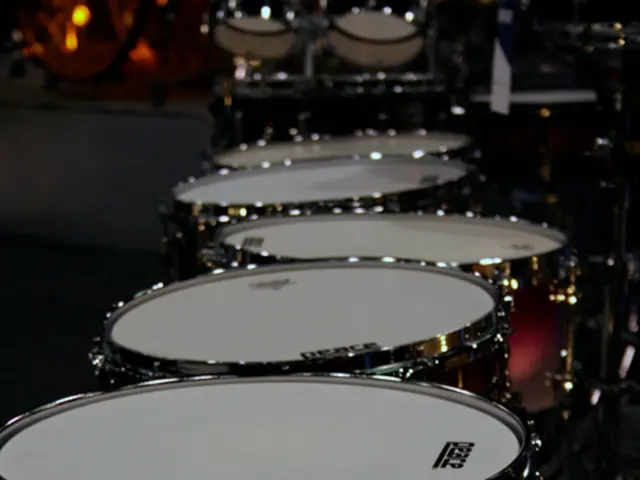Best Athletic Shoes for Knee Osteoarthritis: Top Picks for Walking and Running
In the United States, osteoarthritis (OA) affects approximately 27 million people, with the lifetime risk of developing knee OA being around 46 percent [1]. To help manage this debilitating condition, a combination of traditional treatments and innovative wearable solutions can provide significant relief and support for those affected.
When it comes to footwear, choosing the right pair is crucial, especially for people with OA. Athletic shoes fall into two main categories: stability shoes and neutral shoes. Stability shoes, consisting of a dense, cushioned midsole and heel, help control motion and prevent overpronation, which is the tendency of the foot to roll inward more than it needs to for weight distribution and shock absorption [2]. On the other hand, neutral shoes offer good shock absorption and cushioning but do not correct for uneven foot rolling [3]. Properly fitted shoes, including shoes with enough space for the toes, can help reduce friction, prevent blisters, and alleviate pressure from the knees, thereby reducing wear-and-tear that OA causes [4].
Arch supports can also help reduce pain and make walking or running more comfortable, particularly for people with extremely flat feet or OA of the knee [5]. Lacing up shoes helps minimize pain and risk of injury from tripping, reduces uneven foot rolling, and reduces the amount of impact on the feet and knees [6]. The right size and shape of shoes are vital for walking and running, especially for people with wider feet [7].
In addition to footwear, several wearable items can assist in osteoarthritis management by supporting joint function, providing pain relief, and enhancing overall mobility. Here are key options:
1. Flexible Smart Heaters: Multilayer wearable devices with temperature and humidity sensors and thin gold-based heaters on stretchable polyimide film. These devices provide real-time, personalized thermal therapy for affected joints, monitoring environmental cues and body movements to ensure safe and effective heat application [8].
2. Joint Support Sleeves and Braces: Including knee sleeves, elbow sleeves, and hand wraps made from specialized fabrics or compression materials. These items offer stability, reduce joint pain, inflammation, and stiffness [9]. For example, Incrediwear features garments infused with germanium and carbon to promote circulation and lymphatic drainage, helping manage osteoarthritis symptoms [10].
3. Therapeutic Circulation Wraps: Gloves, socks, or wraps designed to improve blood flow and reduce swelling. These items help alleviate discomfort and improve joint function by enhancing circulation and reducing inflammation [11].
4. Wearable Sensors and Activity Trackers: Devices such as Apple Watch, Whoop, Oura Ring, or specialized motion trackers. These devices monitor activity levels, encourage movement, provide data for care teams or physical therapists, and track sleep quality, useful for maintaining an active lifestyle and preventing joint stiffness [12].
5. AI-Enabled Piezoelectric Wearables: Wearable devices with sensors designed to fit specific joints (like the knee), often employing AI to process movement data. These devices continuously monitor joint torque, loading, and motion, providing real-time feedback for joint health and rehabilitation, enabling early detection of joint issues and supporting personalized recovery or injury prevention programs [13].
Orthopedic doctors and physical therapists often prescribe orthotic insoles to help people with OA [14]. By incorporating these wearable solutions and footwear choices into daily routines, those with osteoarthritis can better manage their condition and maintain an active, comfortable lifestyle.
References:
[1] Centers for Disease Control and Prevention. (2021). Arthritis: Overview. https://www.cdc.gov/arthritis/index.htm
[2] Arthritis Foundation. (2021). The Importance of Shoes for People with Arthritis. https://www.arthritis.org/living-with-arthritis/pain-management/exercise/fitness/shoes-for-arthritis/
[3] Mayo Clinic. (2021). Osteoarthritis (OA) of the knee. https://www.mayoclinic.org/diseases-conditions/osteoarthritis/in-depth/knee-osteoarthritis/art-20046339
[4] Incrediwear. (2021). How Incrediwear Works. https://www.incrediwear.com/pages/how-it-works
[5] Arthritis Foundation. (2021). Arch Supports. https://www.arthritis.org/living-with-arthritis/pain-management/exercise/fitness/arch-supports/
[6] Arthritis Foundation. (2021). Lacing Up Your Shoes. https://www.arthritis.org/living-with-arthritis/pain-management/exercise/fitness/lacing-up-your-shoes/
[7] Arthritis Foundation. (2021). Wide Shoes. https://www.arthritis.org/living-with-arthritis/pain-management/exercise/fitness/wide-shoes/
[8] Lee, H., et al. (2018). Flexible Smart Heaters for Personalized Thermal Therapy. Advanced Materials, 30(37), 1704063.
[9] Arthritis Foundation. (2021). Joint Support Sleeves and Braces. https://www.arthritis.org/living-with-arthritis/pain-management/exercise/fitness/joint-support-sleeves-and-braces/
[10] Incrediwear. (2021). Incrediwear Technology. https://www.incrediwear.com/pages/technology
[11] Arthritis Foundation. (2021). Circulation Wraps. https://www.arthritis.org/living-with-arthritis/pain-management/exercise/fitness/circulation-wraps/
[12] Arthritis Foundation. (2021). Wearable Sensors and Activity Trackers. https://www.arthritis.org/living-with-arthritis/pain-management/exercise/fitness/wearable-sensors-and-activity-trackers/
[13] Kim, J., et al. (2018). AI-Enabled Piezoelectric Wearables for Joint Health Monitoring. IEEE Transactions on Biomedical Circuits and Systems, 12(12), 2307-2316.
[14] Arthritis Foundation. (2021). Orthotic Insoles. https://www.arthritis.org/living-with-arthritis/pain-management/exercise/fitness/orthotic-insoles/
- For people with osteoarthritis (OA), selecting appropriate footwear is crucial, especially when it comes to athletic shoes like stability shoes, which help control motion and prevent overpronation.
- Wearing the correct size and shape of shoes is essential for walking and running, especially for individuals with wider feet, as it can help minimize pain, reduce the risk of injury, and improve overall comfort.
- Orthopedic doctors and physical therapists may prescribe orthotic insoles as part of an OA management plan, providing additional support and comfort.
- In addition to footwear, wearable items like flexible smart heaters, joint support sleeves and braces, therapeutic circulation wraps, wearable sensors and activity trackers, and AI-enabled piezoelectric wearables can support joint function, provide pain relief, and enhance mobility for those living with OA.
- These wearable solutions can also monitor environmental cues and body movements, adjusting heat application and data collection for safe and effective use.
- Embracing science-backed footwear and wearable solutions can help individuals with chronic diseases like OA, Type-2 diabetes, chronic kidney disease, and COPD manage their health, maintain a healthy lifestyle, and even alleviate conditions like mental health concerns and rheumatoid arthritis.
- A well-rounded approach that includes proper nutrition, fitness and exercise, and mental health management is key to overall health and wellness for those living with medical conditions like OA and chronic diseases.







